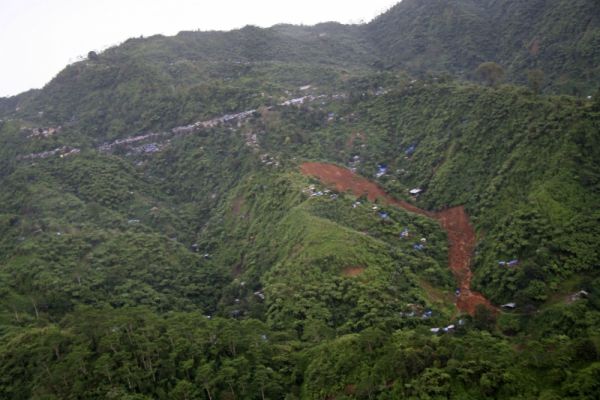28 April 2011
Mining-related landslides in the Philippines
Posted by Dave Petley
A key human cause of landslides around the world is mining. This problem is exacerbated in areas in which mining activities are uncontrolled and unregulated, a particular issue in many less developed countries. In recent months there has been a spate of mining-related accidents in Mindanao in the Philippines. Many such landslides probably go unreported, but for 2011 my database includes the following events:
11/03/2011 Pantukan town, Campostella Valley 1 fatality 5 injuries
30/03/2011 T’boli town , South Cotabato province, Mindanao 3 fatalities 2 injuries
02/04/2011 Tampakan area, Mindanao 4 fatalities 2 injuries
22/04/2011 Kingking villag, Pantukan, Mindanao 24 fatalities 13 injuries
The root cause of the problem is that this area has extensive small-scale and unregulated gold mines. Whilst the rewards are potentially large, the risks associated with mining gold in a deeply weathered landscape that is prone to both earthquakes and intense rainfall are clear. In addition, the miners (which include children) tend to live on the hillsides close to the mine workings. There is a very evocative gallery of images of such a gold mining community in this area at the following location: http://www.photoblog.com/undergroundpix/2008/07/23/.
As you will see from the above, the most recent landslide occurred in a mining camp in Pantukan last Friday, killing 24 people living on the hillside. This image, included in this news report, shows the landslide and the adjacent hillsides:
There is a good gallery of images of the landslide here as well.
As the image above and the gallery illustrate, recovering the victims of this landslide in such a landscape is exceptionally challenging, with news reports suggesting that houseflies are providing a key tool to identify the location of the bodies, whilst the anguish of being the parent of men killed, missing and injured in the landslide is well-described in this report. Of course the longer term problem is how to reduce the very high losses that these landslides are inflicting. This is driving a wave of concern in the Philippines about these mining activities. At the moment there appears to be two responses: First, there are attempts to relocate people living on the most dangerous slopes. This is currently concentrated mainly on the existing landslide site, although attempts may be made to extend this into other areas. Second, a temporary suspension has been placed on small-scale mining activities in this area, but enforcing this ban is of course very difficult.
The bottom line here is similar to the one that we recently highlighted through our NERC-ESRC project in rural Nepal. This is that the population is exposed to a wide range of risks, of which the day-to-day perils of food security, access to clean water, availability of health care, access to education, and a stable income dominate. These people choose to put themselves at greater risk from mining-related and landslide accidents in order to mitigate those daily threats. This is an entirely rational response. So, reducing mining-related landslides requires a coordinated approach that also addresses these everyday threats. The danger is that in unilaterally closing the mines and relocating the population, their everyday risks will increase, with outcomes that are even more detrimental than the landslides. If ever there is a need for joined-up thinking it is here.



 Dave Petley is the Vice-Chancellor of the University of Hull in the United Kingdom. His blog provides commentary and analysis of landslide events occurring worldwide, including the landslides themselves, latest research, and conferences and meetings.
Dave Petley is the Vice-Chancellor of the University of Hull in the United Kingdom. His blog provides commentary and analysis of landslide events occurring worldwide, including the landslides themselves, latest research, and conferences and meetings.